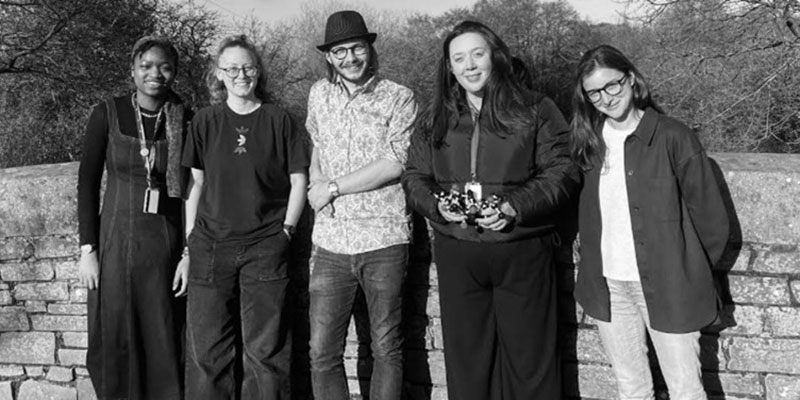Success for York Undergraduate in the 11th National Retrosynthesis Competition
Posted on Wednesday 10 April 2024

The National Retrosynthesis Competition represents one of the toughest challenges in synthetic chemistry. Each year, a fiendishly complex molecule is chosen for teams of chemists across industry and academia to compete to propose the best way to make it. The molecule chosen for the 11th National Retrosynthesis Competition – held in London in March this year – was the natural product called Cinnamomol B.

The molecule is highly complex, and a huge challenge to synthesise. The competition provides a platform for teams to demonstrate their synthetic and problem-solving prowess.
For the first round of the competition, teams are required to present a retrosynthesis of the target molecule. Then a panel of judges selects 10 teams to present their proposed forward route in the finals. The finals showcased a vast range of synthetic approaches and routes were judged on scope for success, novelty and efficiency.
Amy took part with a team from AstraZeneca, where she is currently undertaking a placement as part of her MChem (Industry) degree. The team named ‘Oops!...I Oxygenated Again!’ was made up of Lucrezia Angelini (senior scientist), Martin Cattoen (senior scientist), Sarah Livesley (PostDoc), Stacy Oshingbeme (IP student) and Amy McDermott (IP student – UoY). They placed second in the competition following the presentation of a highly convergent and short route (15 step LLS, 19 steps total) from cheap, readily available starting materials and set chirality by well-trodden asymmetric catalysis and chiral pool.
Their route began with the synthesis of two fragments, later becoming tethered in order to undergo the endgame chemistry. The right-hand-fragment (RHF) consisted of a short and elegant four steps including a Pauson-Khand reaction and a highly step-reducing tri-oxidation.
The left-hand-fragment (LHF) consisted of an asymmetric hetero Diels-Alder reaction to set a pivotal stereogenic centre and the main backbone of the fragment. This was followed by a series of transformations to introduce hydroxyl groups to the fragment. Tethering then allowed the RHF and LHF to couple via a [2+2] cycloaddition, followed by an acyloin rearrangement to generate the desired backbone. A lactonization, pinacol coupling and de-oxygenation finished the synthesis.

Amy McDermott commented: "the opportunity to partake in such competition I am very grateful for. I am happy to have contributed to constructing the RHF and segments of the LHF, and further having the chance to stand up and present our synthesis at the finals.
"But ultimately it was the chance to learn from my team whose knowledge, enthusiasm and perseverance were unmatched, and I aspire to be of their calibre one day. They laid the complex foundations and I helped to build. The endgame was extremely tough, and they really pulled it out of the bag. A major credit goes to them on the result!"
Dr Will Unsworth, a Senior Lecturer in Organic Chemistry, said of Amy’s achievement: "The molecule chosen for the competition this year was extremely complex. Frankly, the challenge is beyond the skill level of the vast majority of PhD students, for an undergraduate student take part in the competition is rare.
"For an undergraduate to qualify for the finals and place 2nd is rarer still and represents an outstanding achievement – well done Amy!"
